By Mike Smith
Full disclosure, I have only had one team I have ever coached to play this way, but with the right personnel it can be very effective. I was fortunate enough to have a group of players on a club team who had played together constantly their entire lives – indoor, outdoor, recess at school, weekends in the neighborhood, ….constantly. Obviously they knew each other, had great touch and could really cause trouble for opponents, especially with the ball on the ground. For example, at practice I would commonly throw out a box and let teams go 6 v 4 or 3 v 5 and just possess the ball. The players would make it a competition to see which side could make the most consecutive passes. This group would routinely make double digit passes going 5 v 7, 5 v 8 and 5 v 9. Because of this, we simply made sure we kept a diamond around the ball in the central areas of the field – we called it a 3-4-3 but it looked more like a 3-1-3-1 with wings ( diagram below ).
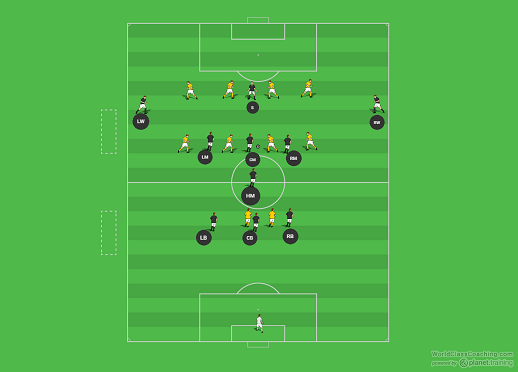
The red diamond below highlights the concept and when it works, there are very few answers. I also benefited from 3 strong marking backs and speed on both wings on this team and it was one of the best / most enjoyable seasons I have had as a coach.
The idea we worked from was to keep the ball in the center of the field – basically playing in the transition zone. With the speed of our wings and the threat of our central players breaking through on the ground right up the middle, most opponents held 4 on their back line and with the wings showing down to the ball, we always had numbers up.
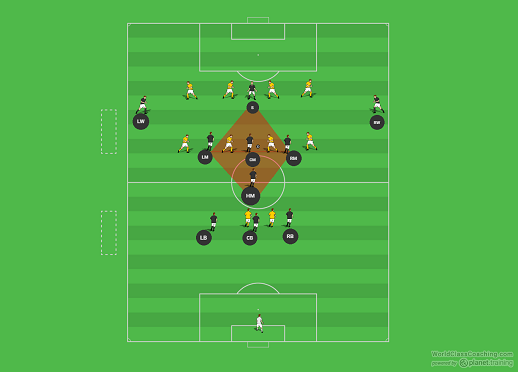
This is a very player specific formation / concept BUT, if you have the personnel (a team full of midfielders for example), it might be worth a shot – at least as an adjustment from a wider style of play. Try these drills at practice if you thing a compact diamond will benefit your team.
Set Up
Use the box to play keep away, 5 attacking players vs 3 defending players ( as shown). The attacking players should seek to stay relatively close – 18 yds of depth and 20 yds of width. I like to use the keeper box and penalty spots as marks i.e., keep the shape with in the width of the keeper box or width of one half the penalty box ( second slide below).
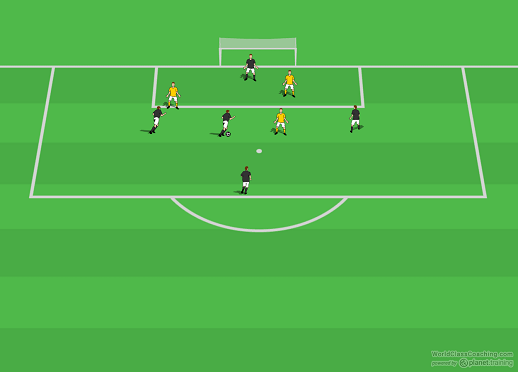
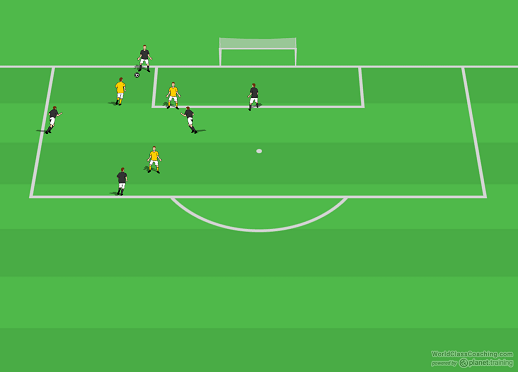
As play progresses, add defenders until it is a 5 v 5 activity and see if the attacking team can keep possession.
Second Progression
Play 9 v 9 ( defending team also has a keeper ) on a half field. As shown below, the idea is for the attacking team to play laterally through the center of the field. The attacking team should possess laterally until the members of the defending team’s back line start to get spread out. Shot attempts should only be taken when a through ball on the ground, on frame, in the box presents itself. ( Below diagrams )
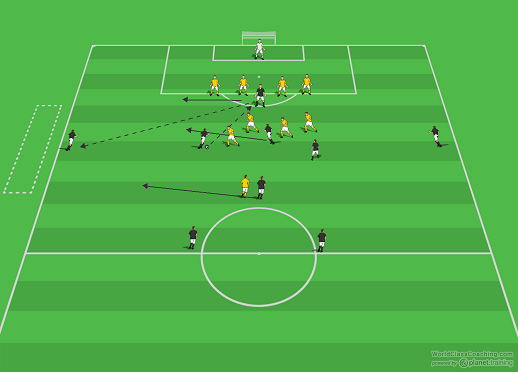
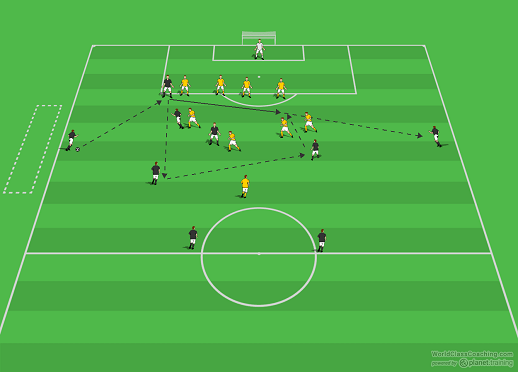
Coaching Points
The coach should make sure the attacking team plays laterally. Essentially, the attacking team’s forward and two central defenders are cover / supporting players and should look to keep the ball moving with in the central diamond in a lateral direction. Again, this style is about keeping possession until there is a gap in the opponents back line which can be exploited on the ground, up the middle.
By Mike Smith
Currently the Head Coach for University Heights Academy Boys Soccer in Hopkinsville, KY , Mike is in his 14th year as a high school head coach with 23 years coaching experience overall and 34 year as a student and fan of the game. He holds a USSF D License.


